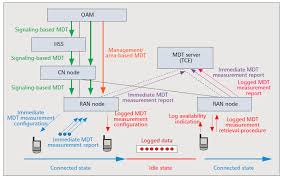5G Drones: Applications in Logistics, Surveillance, and Farming
The rapid development of 5G technology is revolutionizing many industries, and one of its most promising applications is in drone operations. With ultra-low latency, faster data transmission, and reliable connectivity, 5G-enabled drones are no longer limited by traditional communication barriers. These advancements open new opportunities in logistics, surveillance, and farming, reshaping how businesses and governments operate.
5G Drones in Logistics
The logistics industry thrives on speed and efficiency. Traditional delivery systems often face delays due to traffic congestion, geographic barriers, or slow supply chain processes. 5G drones for logistics provide a smarter alternative. They can deliver packages faster, bypass ground-level obstacles, and reduce overall costs.
For example, e-commerce giants and courier companies are experimenting with drone deliveries powered by 5G connectivity to provide real-time tracking, route optimization, and instant data feedback. This ensures accurate Estimated Time of Arrival (ETA) and minimizes lost or delayed shipments. In addition, warehouses can deploy drones to automate stock checking and inventory management, increasing operational efficiency.
5G Drones in Surveillance
Surveillance and security systems depend heavily on real-time video streaming. With 4G networks, latency and poor image quality often limit the effectiveness of drone surveillance. 5G surveillance drones solve this challenge by transmitting high-definition video in real time, even in crowded urban environments.
Government agencies, law enforcement, and private security firms can deploy these drones for crowd monitoring, border control, and disaster management. Equipped with AI-powered analytics, drones can instantly detect unusual activities and alert authorities. The combination of 5G and artificial intelligence makes surveillance drones smarter, faster, and more reliable than ever before.
In emergency scenarios, such as natural disasters or accidents, 5G drones provide instant situational awareness. They can navigate difficult terrain, stream live video to command centers, and assist rescue teams in saving lives.
5G Drones in Farming
Agriculture is another sector greatly benefiting from the 5G drone revolution. Farmers can use drones to monitor crops, analyze soil health, and even spray fertilizers with precision. The integration of 5G allows for real-time data collection and analysis, which helps in decision-making and resource management.
For instance, smart farming with 5G drones enables precision agriculture by providing detailed aerial imagery that identifies pest infestations, irrigation needs, and nutrient deficiencies. This reduces waste, increases yield, and promotes sustainable farming practices.
Moreover, with 5G-powered sensors and drones, farmers can automate repetitive tasks, saving time and reducing labor costs. The synergy of IoT (Internet of Things) and 5G drones ensures smarter, data-driven farming that meets the demands of a growing population.
Conclusion
The arrival of 5G drones marks a new era for multiple industries. In logistics, they streamline deliveries and supply chains. In surveillance, they enhance security and disaster response with real-time monitoring. In farming, they transform agriculture into a more sustainable and efficient industry.
As 5G networks expand globally, the potential of drones will only grow, offering smarter solutions to real-world challenges. Companies and governments that embrace this technology early will gain a significant competitive advantage in the future.







